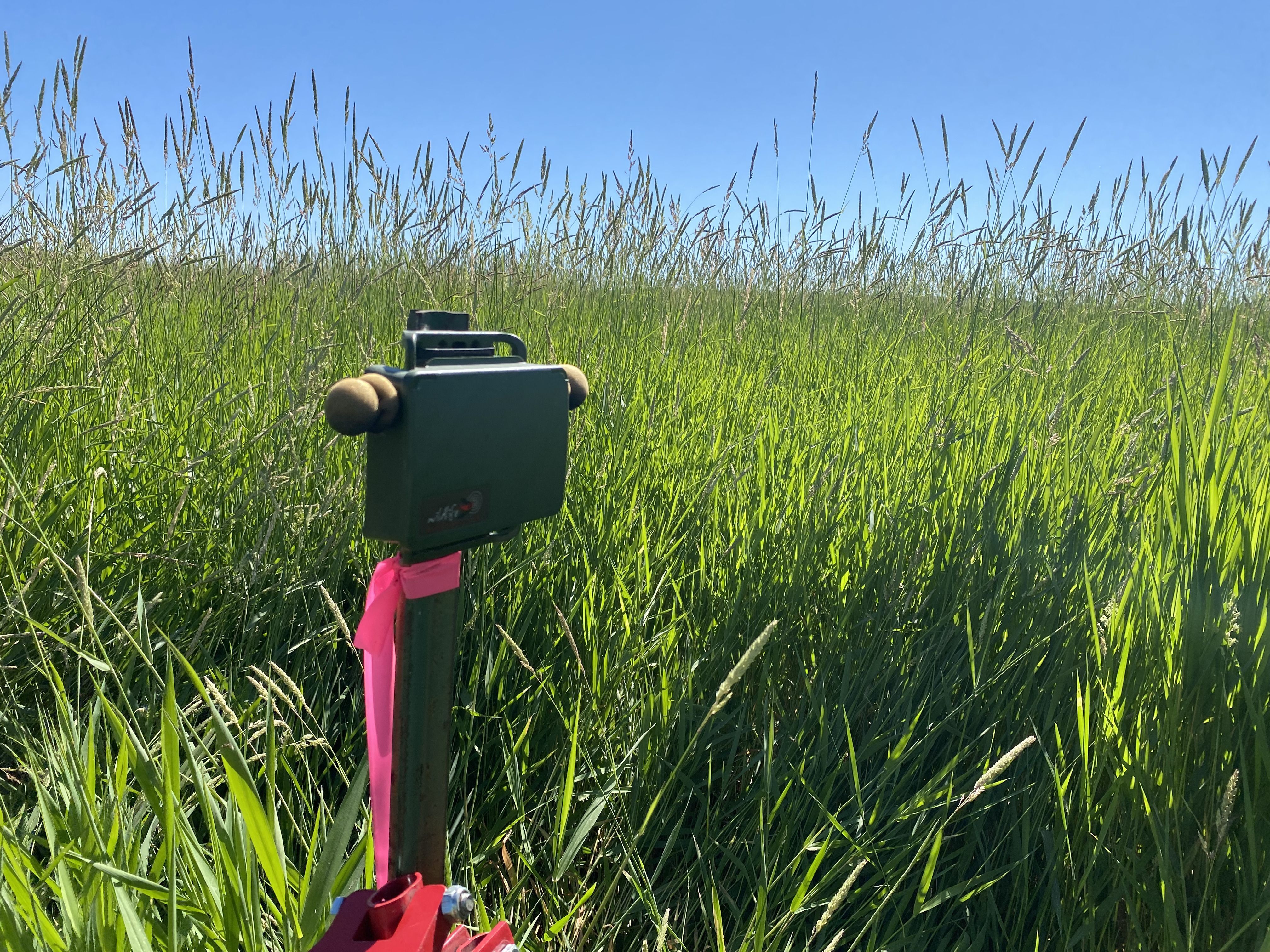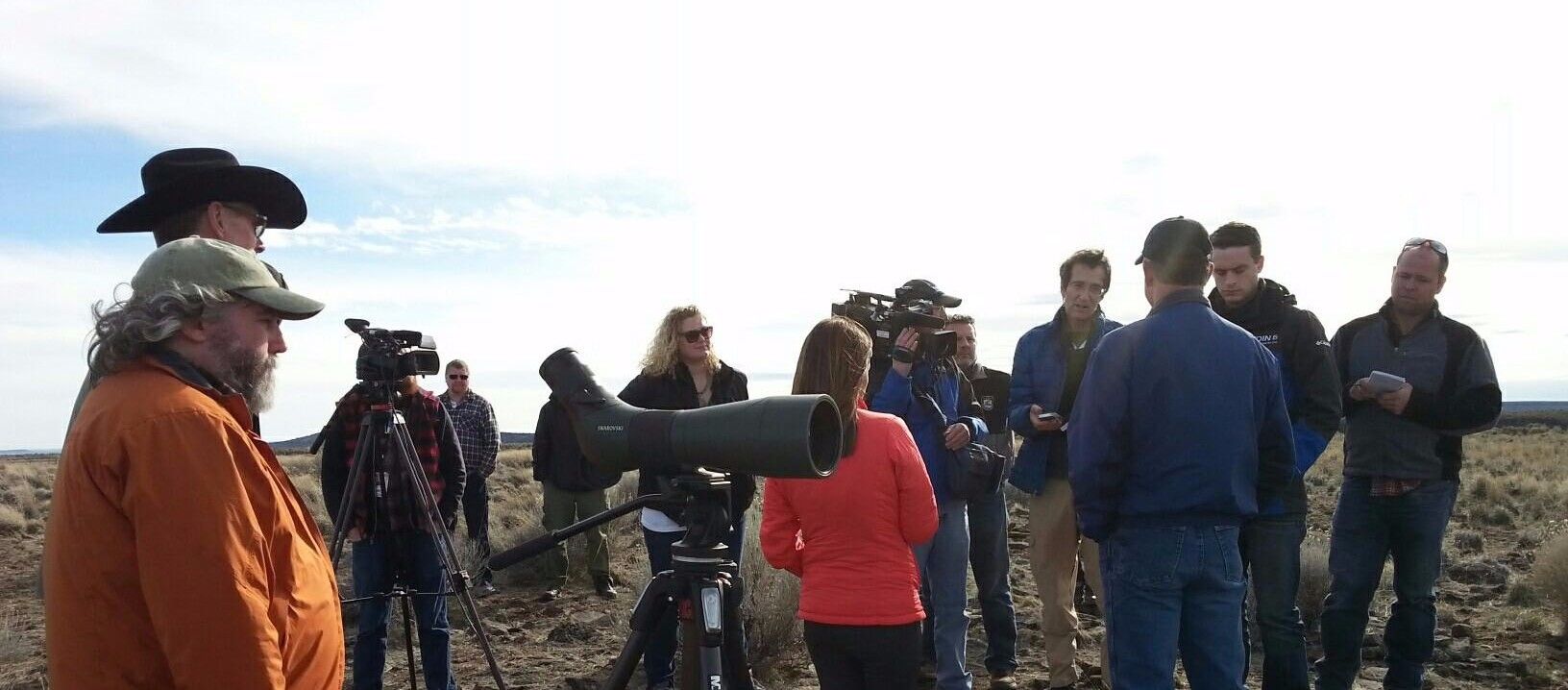
Those in natural resource careers often work in the field collecting data for monitoring or research. As technology evolves, certain tools can make that fieldwork more effective. One such tool is an autonomous recording unit (ARU), also called a song meter. Song meters record sound, in this instance bird songs, to help biologists identify species of birds present in targeted areas.
Portland Audubon and the Harney Basin Wetlands Collaborative (HBWC), a High Desert Partnership collaborative, are working together using song meters to help monitor birds in the Harney Basin. This information will help researchers better understand how birds utilize and adapt to habitat quality influenced by ever-changing weather conditions, as well as the stewardship strategies implemented by land managers.
Song meters
“Song meters are small bird audio recorders that you can put out just about anywhere,” said Melissa Petschauer, coordinator for the Harney Basin Wetland Collaborative (HBWC). “You can set it to different frequencies and also different timings to record, much like a game camera, but just for sound.” The songmeters will help identify the birds presence and timing in different vegetation or habitat types.
Teresa Wicks, the Eastern Oregon Biologist with Portland Audubon has found the song meters to be a great help in collecting bioacoustic data [Bioacoustics, the study of the production, transmission, and reception of animal sounds in nature provides . . . insight into species diversity, habitat health, wildlife behavior, and more. ~wildlifeacoustics.com] “Historically a lot of bioacoustics were used for whales, frogs and bats,” she said. “Over time, biologists realized that by deploying these computers we can expand our bird monitoring efforts without having to put more people on the ground.”
As of 2023, Portland Audubon and HBWC have installed 17 song meters thanks to funding from the Oregon Water Enhancement Board. In 2024, that number will increase to around 40. Wicks said that the song meters are about the size of a standard iPad and are placed in areas within the Malheur National Wildlife Refuge. They are attached to T-posts four feet above the ground so that they stay above the water in flooded meadows but are low enough to reduce the risk of being struck by lightning. The song meters can pick up bird songs up to a quarter mile away.
In the coming year, they will also be placed in fields at the Eastern Oregon Agriculture Research Center and on several Harney Basin ranches to monitor bird presence and activities in areas with reed canary grass. Reed canary grass, an invasive species, is expanding at the expense of native vegetation. “Last year we doubled the amount of monitoring we were doing in wet meadows and this next season, we’ll be adding another 16 to riparian areas,” she said. “We’ll actually be recording twice as many places as we were three years ago on the refuge.”
Song meters can be placed in hard to access areas allowing researchers to do more work with less effort. Wicks said that when they do field surveys, they will visit a site three times and that’s it. However, song meters can be programmed to record every day at sunrise, sunset and the middle of the night. As a result, they pick up species that a human surveyor might miss. Wicks said an example of this occurred at a site on the refuge where human surveyors never saw burrowing owls, but the song meters recorded them every night through the breeding season. “So, we know they were somewhere in that vicinity because we were picking them up. We just never saw them,” she said. With the song meter, “you are more likely to capture species that are not particularly vocal or that are highly mobile, and that’s one of the most compelling things about them,” Wicks noted.
Analyzing the data
Once all the data is collected, which can amount to more than 1,000 recordings per song meter, Wicks runs it through a program that analyzes the bird songs and identifies them. At its most basic level, the song meter can help identify whether a bird is present or absent. However, when the data is analyzed by an expert in the field, the data can also reveal abundance information, such as how many birds might be populating a particular area.
The program Wicks uses to analyze the song meter data also creates a spectrogram, or a visual representation, of the bird songs. Oftentimes, Wicks can look at the spectrogram, without hearing the recording, and identify which birds the song meter picked up. “When we run the information through software, all it can say is whether these birds are here or not, but if I look at a recording, I can start to see more than one bird is singing at a time,” she said.
Just as bird songs are unique to each species, so too are their song visualizations. Through the spectrogram, she can see where songs overlap with each other or when some birds are closer to the microphone than other birds as the visualization can appear brighter. “The hope is that we’re getting data that can tell us the presence and abundance of the species that we’re managing,” she said.
Collaborative work
One way the Harney Basin Wetlands Collaborative is using song meters is to document bird presence and uses in areas where reed canary grass is expanding at the expense and reduction of native plants and habitat quality. “One of the big questions in this area is bird use and how we can make habitat in this area better for them but also better for ag users,” Petschauer said. In particular, the collaborative wants to examine how reed canary grass, an invasive species, is changing bird habitat.
Wicks said they will be looking at areas where reed canary grass is dominant, moderately dominate and where there is little to no reed canary grass and which birds are present in those areas. The song meters will collect data alongside humans. “We are going to use people to collect some more specific data about how birds are using the reed canary grass. That’s information the song meters can’t collect,” Wicks said.
For example, song meters cannot tell whether or not a bird has built a nest in reed canary grass or whether or not reed canary grass is providing good bird habitat. “We’re trying to combine this presence/absence and abundance/community data that the song meters are collecting with some more specific information about how birds are using these different areas with reed canary grass,” she said.
The information can be used to develop vegetation and water management recommendations to help suppress invasive species like reed canarygrass, sustain and increase bird use and optimize agricultural production in concert with a changing climate and water patterns. “It just makes us better at understanding the likely short-term and long-term impacts or benefits of the management actions that we take in these wet meadows and wetlands in the Harney Basin,” Wicks said.

